Menifee, CA Pollen and Allergy Report for Summer 2023
Pollen Allergy Trends in Menifee, CA
When is pollen lowest in Menifee, CA?

February
Lowest month total PPM
Avg. PPM
When is pollen highest in Menifee, CA?

March
Highest month total PPM
Avg. PPM
How does pollen in Menifee, CA compare to California?
Menifee has a lower average PPM than the state of California.
Menifee yearly avg PPM:
California yearly avg PPM:
How does pollen in Menifee, CA compare to the USA?
Menifee has a lower average PPM than the USA.
Menifee yearly avg PPM:
USA yearly avg PPM:
Is pollen worse this year in Menifee, CA?
Spring 2023 was better than spring 2022.
Spring 2023 PPM:
Spring 2022 PPM:
Average PPM in Menifee, CA
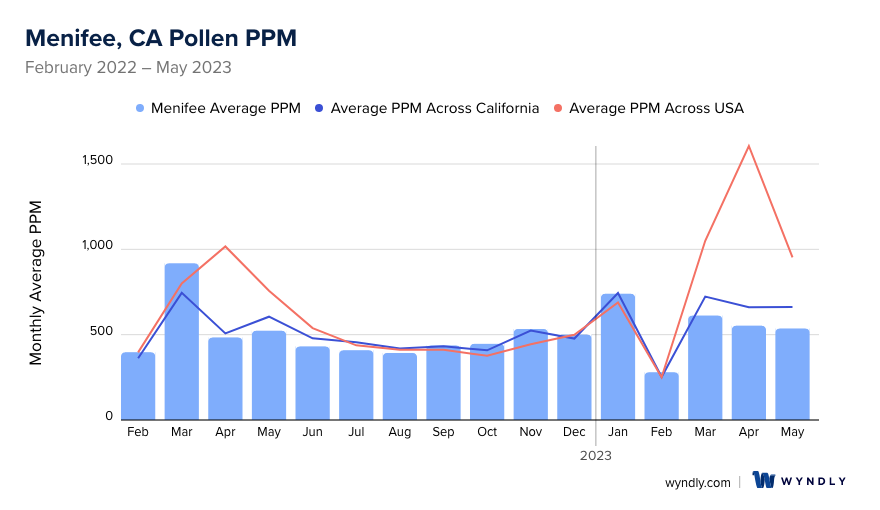
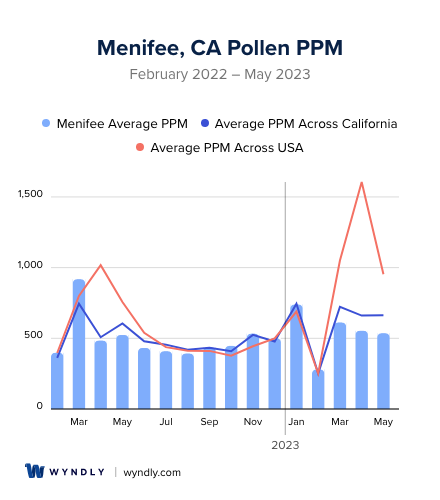
Menifee, CA Pollen and Allergy Breakdown by Month
Grass
When is grass pollen highest in Menifee, CA?
May has the highest grass pollen in Menifee, CA with an average PPM of
When is grass pollen lowest in Menifee, CA?
December has the lowest grass pollen in Menifee, CA with an average PPM of
Tree
When is tree pollen highest in Menifee, CA?
March has the highest tree pollen in Menifee, CA with an average PPM of
When is tree pollen lowest in Menifee, CA?
July has the lowest tree pollen in Menifee, CA with an average PPM of
Weed
When is weed pollen highest in Menifee, CA?
November has the highest weed pollen in Menifee, CA with an average PPM of
When is weed pollen lowest in Menifee, CA?
February has the lowest weed pollen in Menifee, CA with an average PPM of
Menifee, CA Pollen Monthly Breakdown by Pollen Type
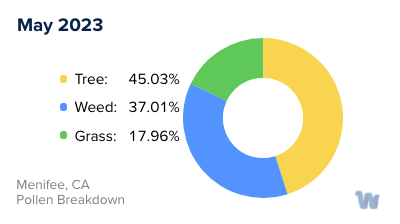
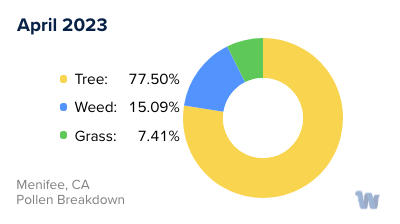
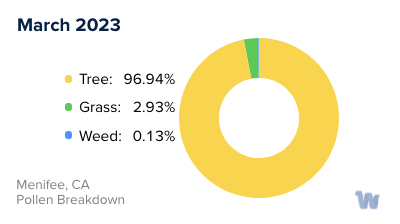
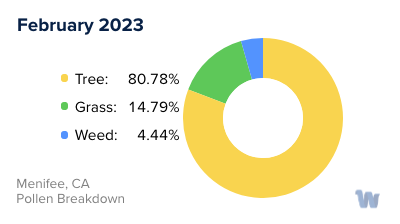
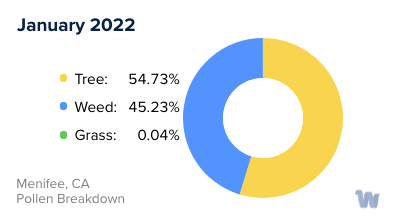
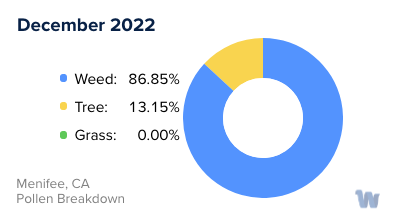
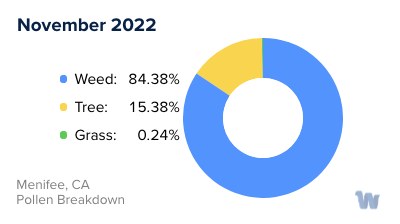
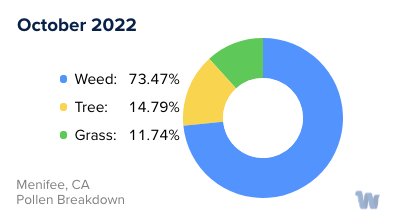
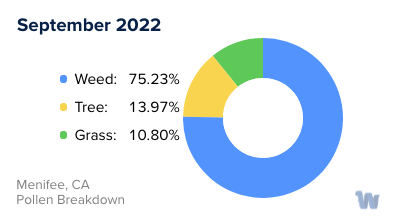
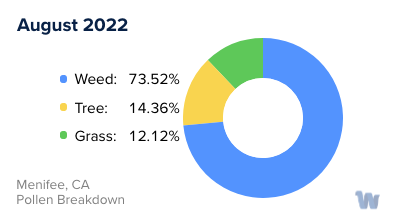
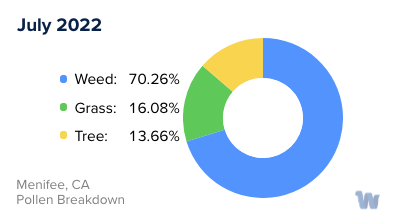
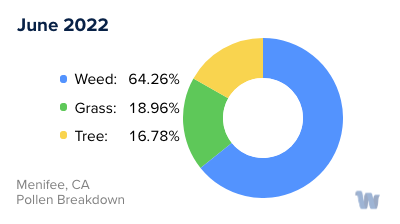
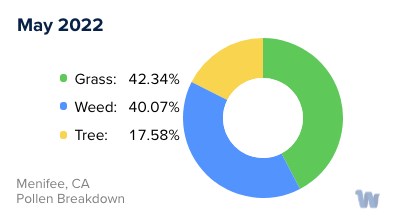
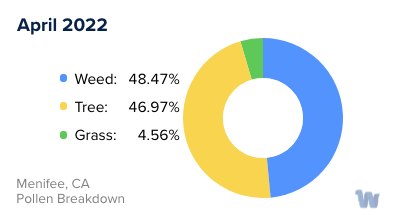
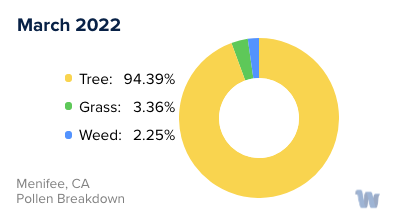
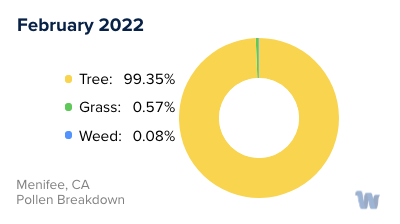
Pollen and Hay Fever in Menifee, CA
Pollen allergies, often known as hay fever, are a common occurrence in Menifee, California, potentially affecting the lives of its residents in various ways. The primary producers of pollen in California are grasses, trees, and weeds. More specifically, common allergens include Bluegrass, Ryegrass, Sagebrush, Ragweed, Russian thistle, Mulberry, Oak, Olive, Ash, Cedar, and Eucalyptus.
The pollen count, a measure of the pollen density in the air, varies depending on the day and type of pollen. For instance, tree pollen might be low on one day, while grass pollen could be high on another. This dynamic nature of pollen counts means that even if the overall pollen count is low, the allergy risk could still be high for individuals sensitive to a specific type of pollen.
California's allergy season is relatively long due to its warmer climate and starts around late January, extending until early October. However, the intensity of the allergies can vary throughout this period. April, May, and September are typically peak months for seasonal allergies, with high pollen counts that can exacerbate hay fever symptoms.
Allergy sufferers are encouraged to keep an eye on the local pollen count, especially during these peak months. Despite the challenges, California's coastal climate results in overall lower pollen counts compared to other states with similar weather conditions, offering some relief to the residents.
Keep in mind that the type of pollen causing allergies can differ from person to person. Some might be more sensitive to grass pollen, while others might react to tree or weed pollens. Furthermore, while the outdoor pollen count decreases during the winter months, indoor allergens can still cause allergic reactions. Understanding the pollen seasons in Menifee, California, can thus be a key step towards managing hay fever symptoms effectively.


